Messors – Art & Cultural Heritage Conservation
Messors supports and promotes cultural heritage. Our educational workshops are immersive experiences involving participants in hands-on, in-the-field and in-situ activities.
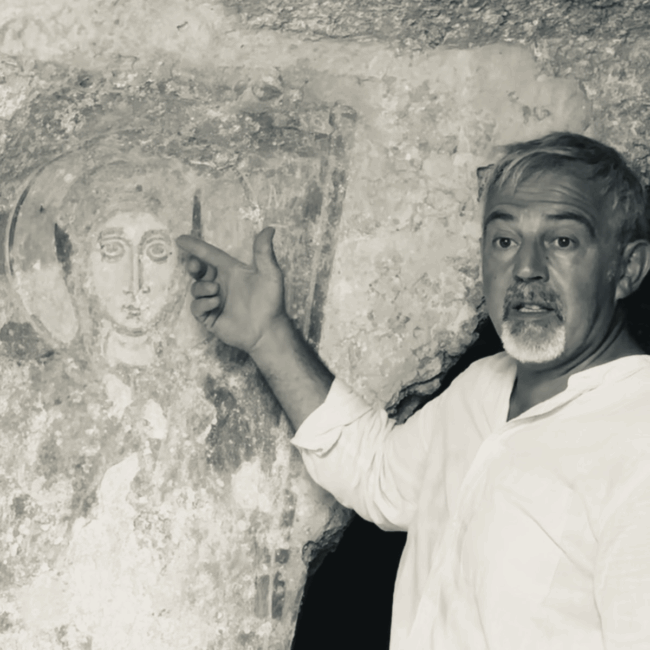
Tonio Creanza, founder and director of Messors, is a Cultural Heritage Conservator. Tonio grew up on his family farm tending to durum wheat, vineyards, and olive tree cultivation in the historical and archeological rich setting of Puglia. As a cultural heritage conservator and 6th generation olive oil producer, his knowledge and passion for food culture and history is echoed in the Art, Architecture and Archaeology workshops he has been running since 1995. The hands-on and in-situ approach of his workshops creates an enriching living school model and culturally connecting experiences for travellers and locals.
Advocate and director of sustainable projects and multidisciplinary programs for the enhancement of Cultural Heritage and Historic Sites in rural context.
Born and raised in Altamura (Puglia, Italy), in 1989 he founded the cultural heritage conservation company Sinergie and has over 30 years of experience in the fields of art conservation and historical cultural landscape preservation.
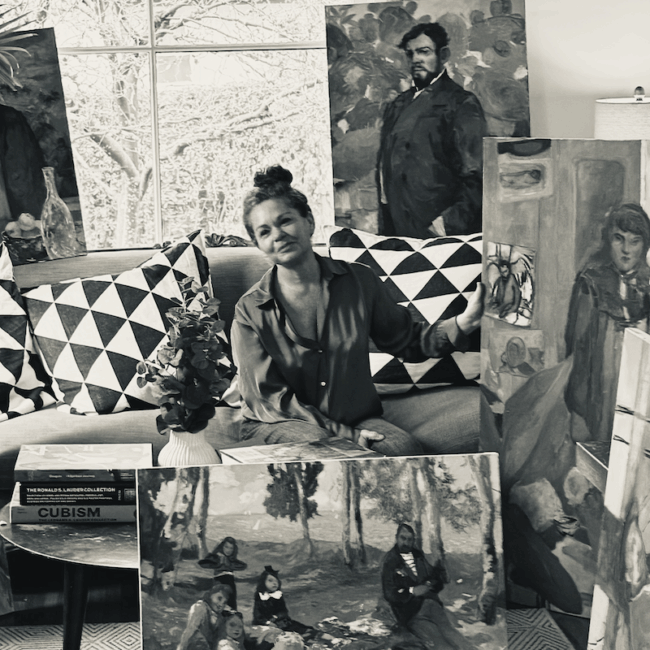
Jennifer Bell, Co-founder of Messors, acts as the workshop developer and coordinator. As a professional artist, Jennifer recognizes the profound cultural significance of art in a community and understands the critical importance of preserving it for future generations. Her introduction to the fine arts world began in her twenties when she left Vancouver, transitioning from a film background to study at the Art Students League for five years under the guidance of Austrian volcanic expressionist Gustav Rehberger. Jennifer first participated in the Jesce Project—a Puglian historical site preservation initiative —in 2004, and continued her visual arts studies at the Academia di Belle Arti in Bari. Living in Italy and engaging with the community and its cultural heritage has solidified her commitment to Messors’ mission to promote and preserve art and cultural heritage. Jennifer splits her time between Italy and Canada.
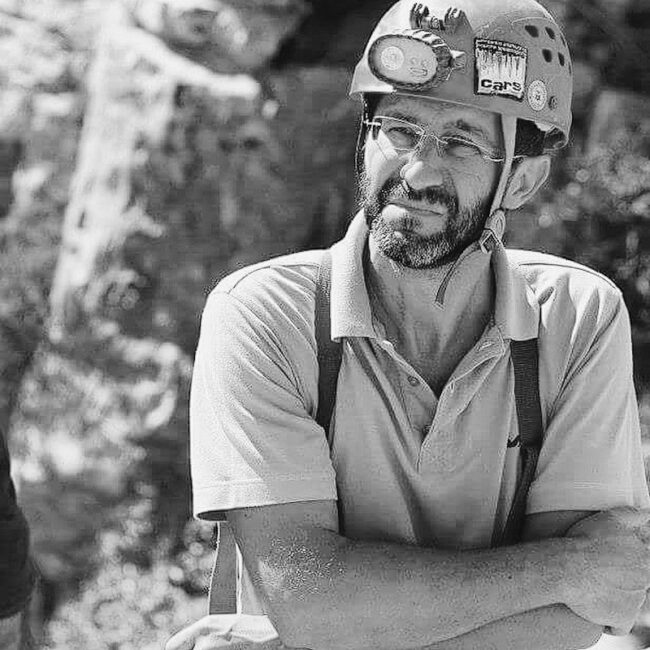
Born and raised in Altamura, Giovanni has his Doctorate in Agronomy and is the Co-Founder and Co-Director of the Fornello Cave Project. Giovanni led the group that discovered the Neanderthal fossil skeleton ‘Uomo di Altamura’- ‘Altamura Man’ and continues to be active in Speleology. He has extensive knowledge of the Pugliese territory from his contributions ranging from biology, geology and photography. Giovanni is one of the co- founders of Sinergie and with Tonio has been running archaeology and site conservation projects since 1989.

Filip Petcu is the Director of the Muzeul de Artă Timișoara (National Museum of Art Timișoara) and serves as the lead painting conservation instructor for our summer programs. He is a lecturer specializing in Byzantine iconography, painting restoration, and conservation practices.
Filip actively contributes to the Messors’ Fornello Sustainable Preservation Project, which focuses on the study and recovery of the fresco iconographical program at the rupestrian site in Altamura, Puglia, Italy.
He earned his Master’s degree in “Icon-Painting and Restoration” and holds a Bachelor’s degree from the Faculty of Arts and Design at West University of Timișoara. In 2014, he completed his Ph.D. in visual arts, specializing in Byzantine iconography, which highlights his dedication to scholarly pursuit and excellence in art conservation. Filip is also a lecturer in the Department of Conservation-Restoration of Painting at the West University of Timișoara, where he continues to make significant academic and practical contributions to the field.
Filip advocacy for art from Timișoara, Romania, and beyond has helped elevate the Timisoara National Art Museum to a standard for art museography in both Romania and Europe. His achievements during the year of Timișoara’s designation as the European Capital of Culture greatly strengthened the city’s status as a leading cultural hub. A notable recent exhibition, “Caravaggio’s Lights: The Beginning of Modernity in European Painting—Masterpieces from the Roberto Longhi Collection,” was held at the National Museum of Art Timișoara from November 2024 to February 2025. This exhibition showcased, for the first time in Romania, an original painting by Caravaggio.
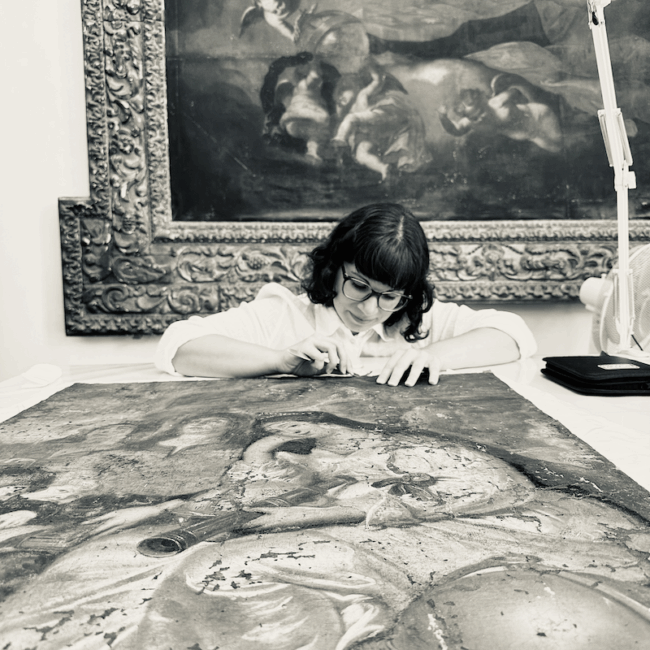
Joana is an art conservator specializing in paintings and contemporary art conservation. She graduated in Conservation and Restoration from the Federal University of Rio de Janeiro and has recently received her MA in Conservation and Restoration of Cultural Heritage from the Catholic University of Portugal. Her research is focused on the inpainting of artworks, studying both traditional techniques and materials available for this phase of intervention and researching the application of different binders as inpaint media, their stability and reversibility. She has worked as a conservator for institutions such as the Serralves Foundation. Currently, she acts as a private conservator in Brazil, working for collectors and art galleries at Centro de Conservação de Bens Culturais and Marcela Tapia’s studio. This will be Joana’s third year working with Messors as fine art conservator workshop instructor.
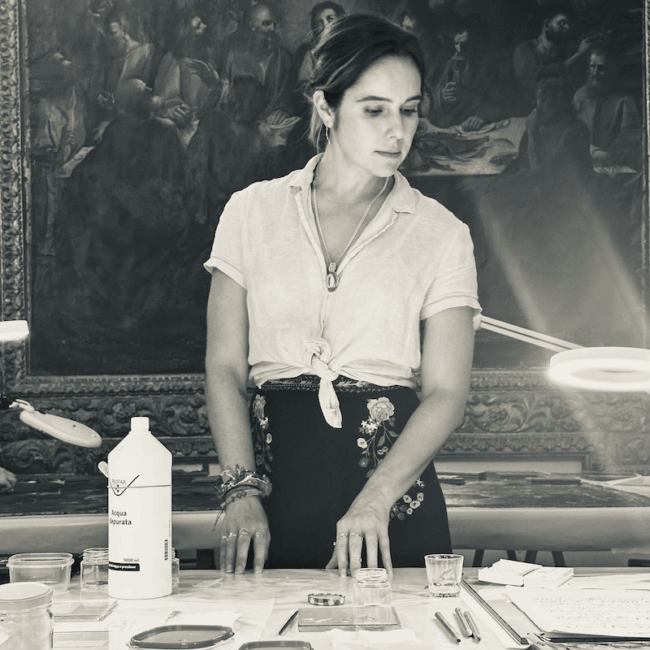
Bia is a trained chemist and conservator who combined her interest in Science, Art and Conservation to build a career as a heritage scientist. She received her MA in Conservation of Archaeological and Museum Objects from Durham University and, more recently, a PhD in Science from the University of Copenhagen, where she applied her chemistry skills to the study of Archaeology. As a scientist, Bia has focused her research mainly on the application of non-invasive spectroscopic techniques for the study of pigments and developed a large study on the characterization of madder and cochineal pigments by fibre optic reflectance spectroscopy (FORS) at the Getty Conservation Institute. Throughout the years, however, she never fully left her role as a conservator, and worked as such in several institutions, such as the National Museums of Scotland and Durham University. However, it was at Centro de Conservação de Bens Culturais in Brazil, where, for the past seven years, she focused on the conservation of works of art on paper. Now, Bia divides her time between her work in Brazil as a conservator and her research in Denmark.
Since 1989, our comprehensive approach has stimulated an engaging learning environment complemented by interactive and connecting experiential outcomes.
Our workshops and projects play a creative, dynamic role in conserving and enhancing historical contexts in the rich cultural setting of Puglia and Basilicata in Southern Italy.
In all the workshops offered, participants interact with experts, professionals and members of the region to explore ways tangible and intangible cultural patrimony and its conservation can substantially impact communities and larger cultural and social issues.
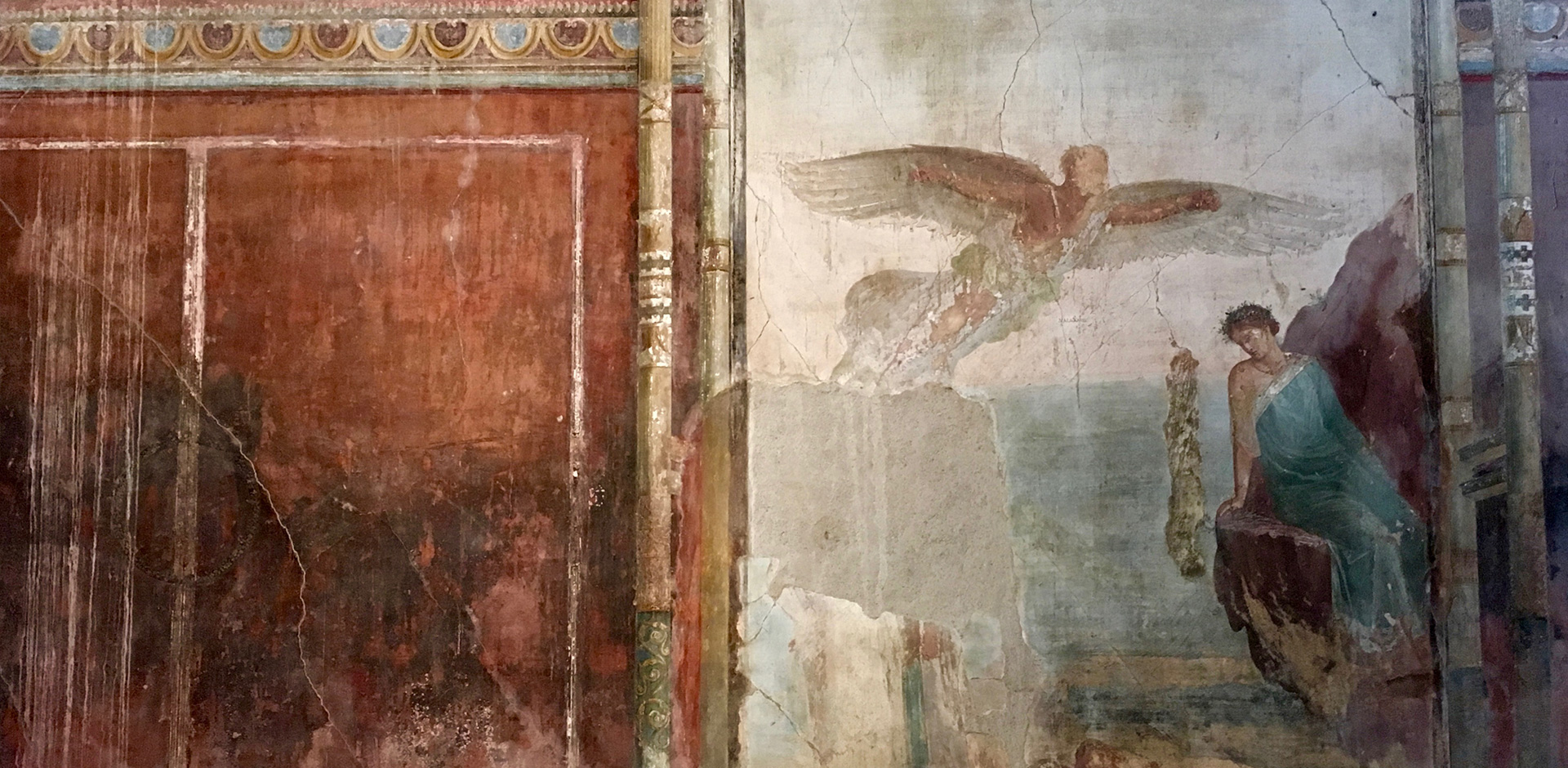
Our Approach & Philosophy
Program founder and director Tonio Creanza has been running fresco and art conservation projects and volunteer preservation programs for over 25 years. Since early childhood, he has harvested the grapes and olives, and seeded the Murgian plains with wheat. As a teenager, he explored the underground caves and learned to identify the geographical clues of hidden Hellenic burial sites.
His passion for the historically rich region is echoed in the programs approaching them with the enthusiastic concept “to do is to learn”; recognizing the importance of process and learning through practice. All of our workshop leaders and contributors share this same spirit.
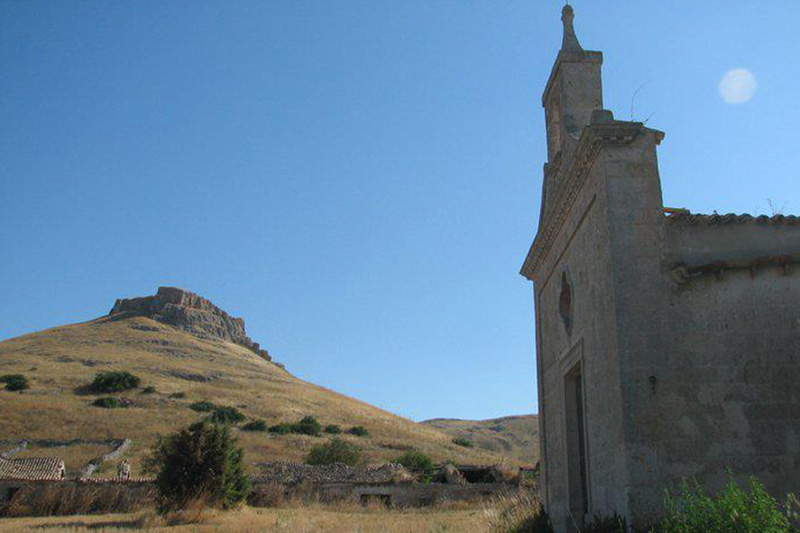
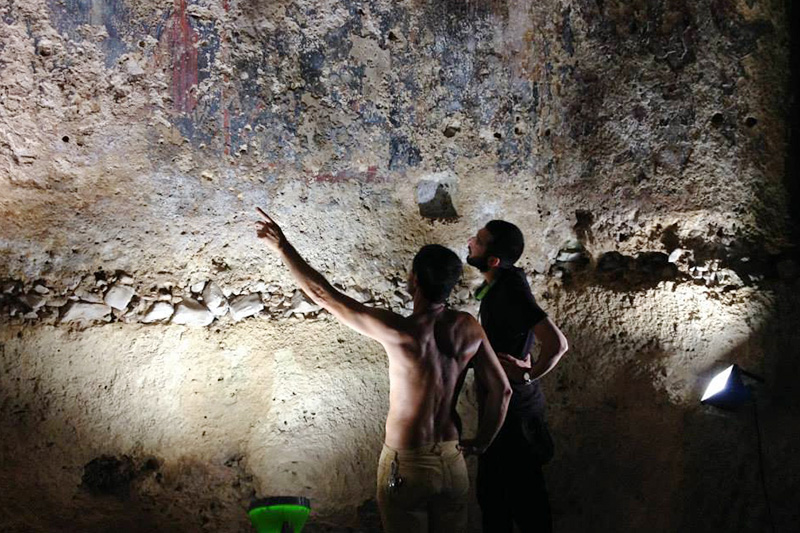
In 1989, an enthusiastic group with various specialties in the areas of conservation of the regional artistic and cultural heritage gathered together to form a collective under the name Sinergie. And In 2010, the group established Masseria La Selva, an 18th century hunting lodge, as the location to conduct the workshops under its new name Messors.
Messor, in ancient Roman mythology, was one of the helpers to the goddess of agriculture and grain crops. A Messor is one who “reaps and harvests”.
Since its inception, under the guidance of program founder director Tonio Creanza, the company has been working on: archeological research, extensive restoration projects on frescoes, architecture, canvas, wood and stone statues and decorative painting, guided tours, educational field school projects, and “study abroad university programs” credited courses in fresco restoration and archeology.
In 1993, the collective proposed a project titled Eutropia to the municipality of Altamura. The aim was to restore and promote an important historical-archeological site called Masseria Jesce. This educational volunteer project ran from 1995 to 2009 and hosted over 700 volunteers coming from abroad to help and learn traditional stone wall techniques of restoration. By 2009, seventy percent of the site was restored and is now used by the community for arts and culture events.
Between 2004 and 2008, the organization, in conjunction with Dr Joan Walker, collaborated with James Madison University of Virginia to offer educational programs in the area of fresco restoration and archaeology in Puglia region.
